10/1 – 24/1/2001
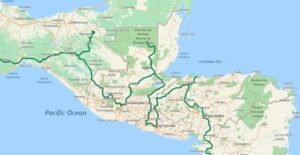
The crossing into Guatemala was uneventful, apart from a request for 30 Quetzels ($3) from a very young border guard – beaten off by my demand for a receipt!
Next day, we completed the drive to Chichicastenango in good time for the Thursday market. We bought gifts and a number of Mayan artefacts; that we examined more closely when we reached Lago de Atitlán
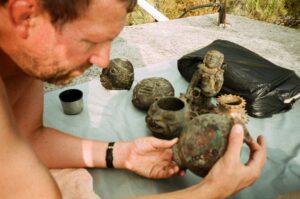
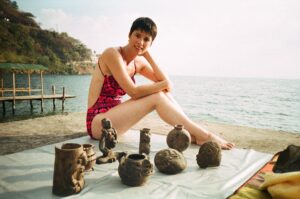
– where we camped on the lawn of the Hotel Vision Azul; with views across the lake to the three volcanoes on the far bank.
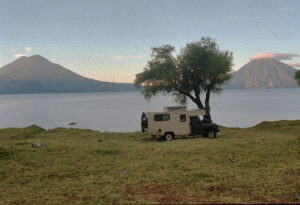
![]()
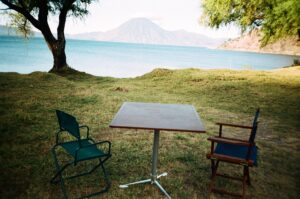
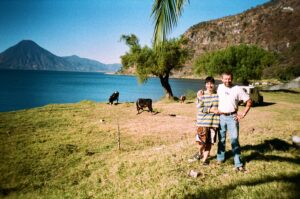
Next day, I (Paul) took a boat across the lake to San Pedro, where a local guide
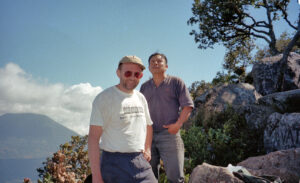
took me on the climb of the 2,900 metre volcano of the same name. The walk started through hillside plantations, where people were harvesting the ripe, red coffee beans. There were impressive views over the Lake from the top.
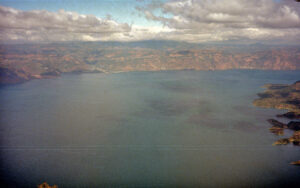
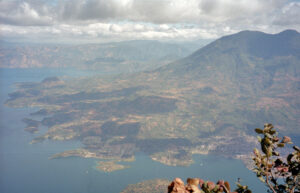
I slept well that night.
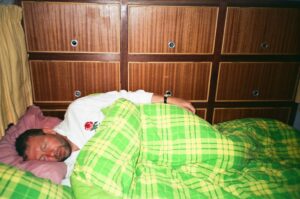
A French/German couple – Helga and Fred – were camped with us at Lago de Atitlán and we travelled with them for the following week.
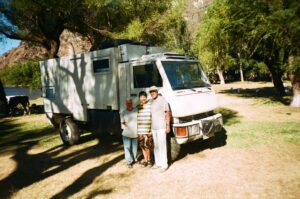
We drove the through the green and hilly country to Antigua Guatemala; famous for its Spanish colonial buildings.
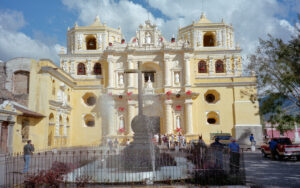
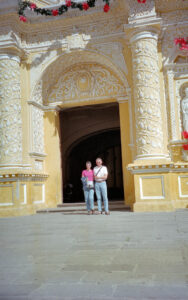
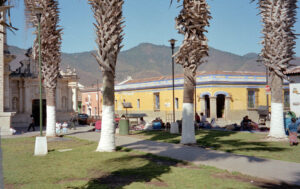
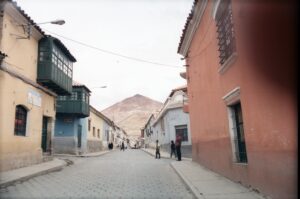
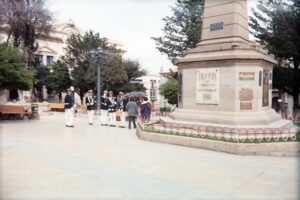
The Mayans greatly valued the locally mined jade and a number of workshops in the town continue the tradition.
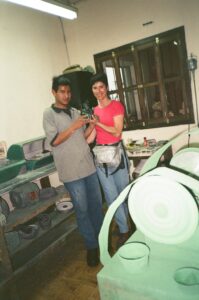
While looking for a parking place, the vehicle started swaying and people hurried out of the buidings into the centre of the road. A previous earthquake in 1773 had destroyed the city and ended its position as Guatemala’s colonial capital.
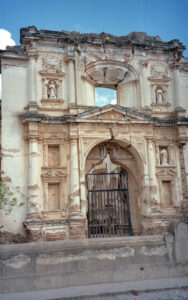
This earthquake, though much less powerful, still caused some damage to buildings.

After filling our water tank,
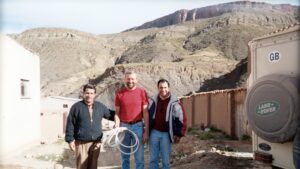
we drove through Guatemala City and camped in the car-park of a restaurant near the Biotopa de Quetzel; where we had dinner with Helga and Fred.
![]()

We spent the next day at Semuc Champey – a popular beauty-spot with pools
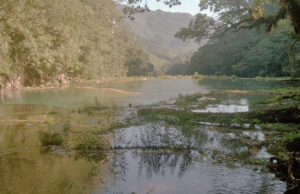
and a river cascading over sandstone ridges.
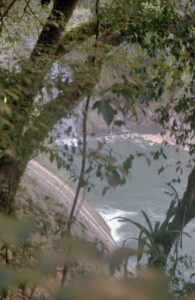
![]() A few days later, we reached Tikal. Set in dense forest,
A few days later, we reached Tikal. Set in dense forest,
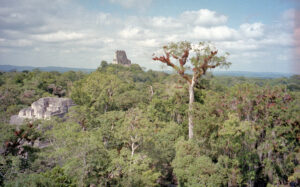
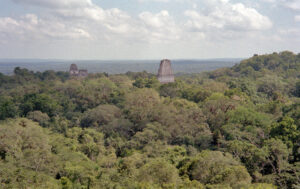
the ancient Mayan city
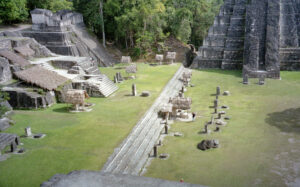
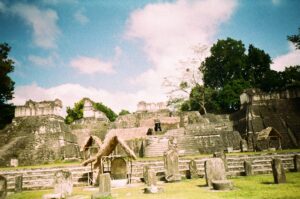
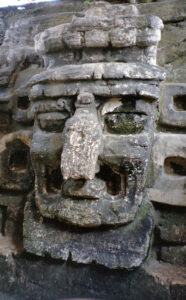
is famous for its pyramids
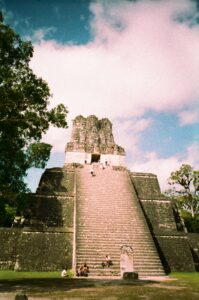
![]()
![]()
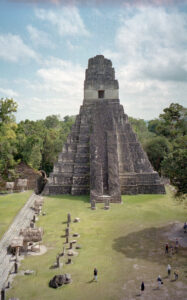
After our visit, we camped on the edge of Lago Petén Itzá
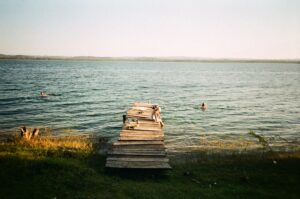
– again with Helga

and Fred.
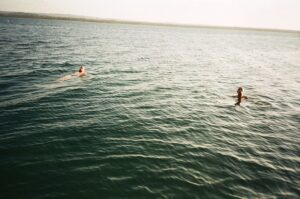
We moved on to Lago de Izabal;
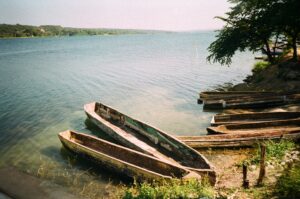
camping at a nearby rubber plantation.
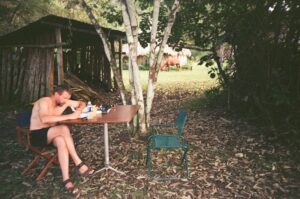
Next day, we had lunch at the Quirigua ruins – best known for its large, finely carved stelae;
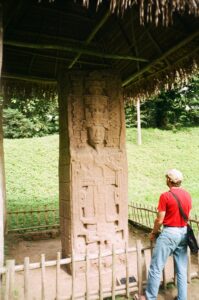
![]()
![]()
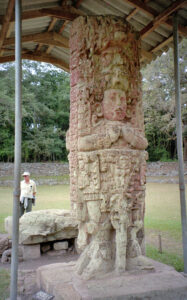
and ended our day at Esquipulas; where we joined the devout Guatemalans as they shuffled past the venerated sculpture of a black Christ in the enormous, white basilica.
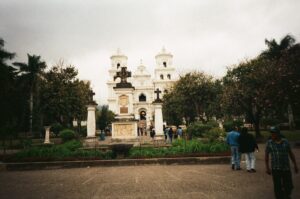
Next day, we made an early start to cross the border into El Salvador.- a small densely populated country that has been largely deforested. We stopped at Lago de Guija for lunch.

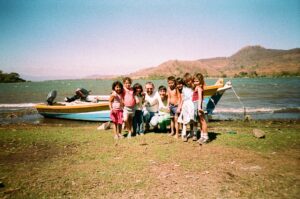
Mid-afternoon, in the absence of any safe place to camp, we checked into an ‘Auto-Hotel’ on the outskirts of Sansonate. It was a very strange place. We saw no staff, and room service was via a hatch served by a dumb-waiter. Our best guess was that the hotel’s purpose was as a discrete location for trysts.
Next day, we drove towards Cerro Verde – a national park atop a volcano.
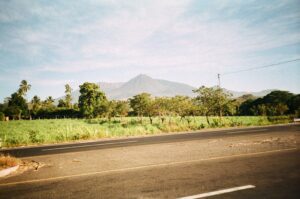
The earthquake – whose epicentre was in El Salvador – had damaged the access road and the park was closed. We still had a great view of Volcan Izalco – a large cinder cone that appeared during an eruption 200 years ago.
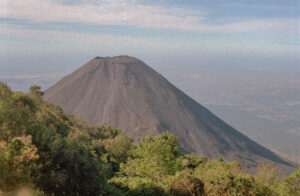
We turned back to Lago de Coatepeque; where we camped in the drive of a guest-house
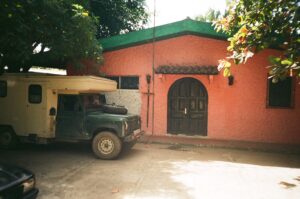
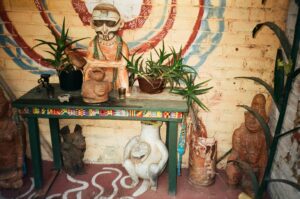
with a veranda over the lake.
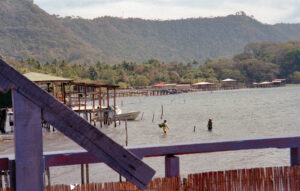
Next day, we skirted San Salvador and headed to the border with Honduras.
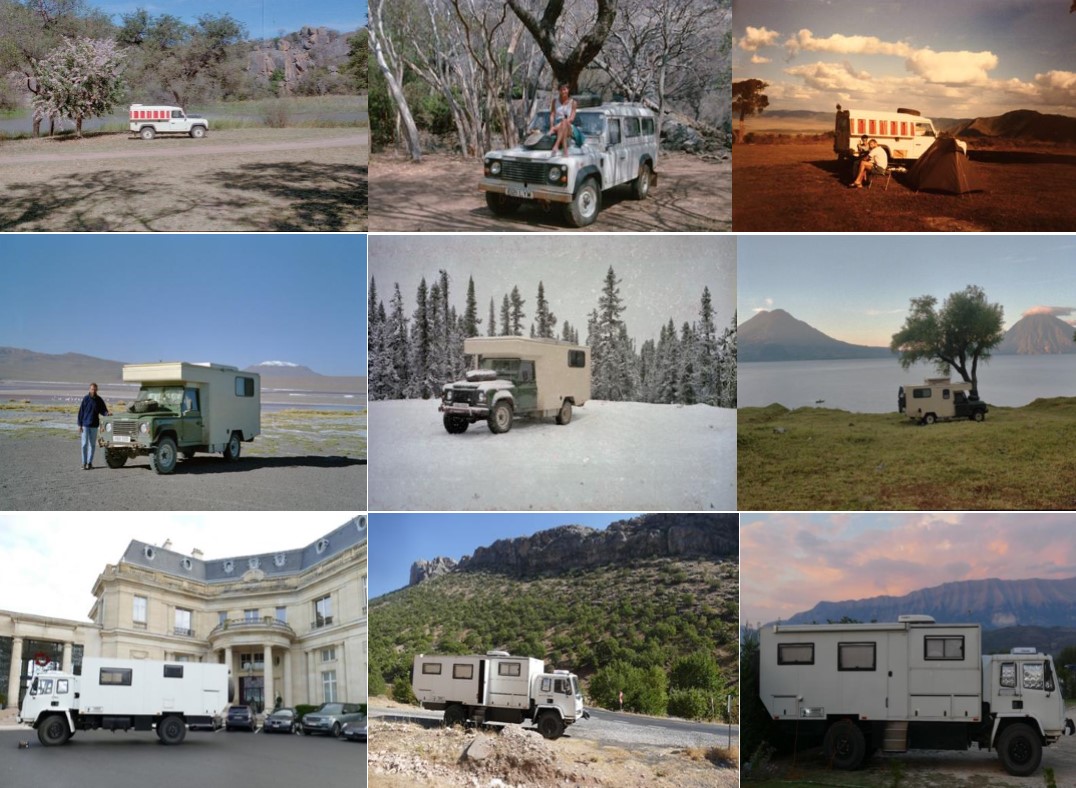
Fantastic views from the top of the volcano climb and love the spanish architecture, but what an experience to be there for an earthquake.
There is such a contrast between the Spanish colonial style (how baroque can you get?) and the lines of the Mayan pyramids. Earthquakes are scary – you don’t get any warning, they happen and then you realise it. Lakes and volcanos seem to be the overall theme here!
Seem to recall you particularly liked Guatemala even though Foreign Office advice was ‘don’t go’. Earthquake a bit scary, but then Paul likes going up mountains…